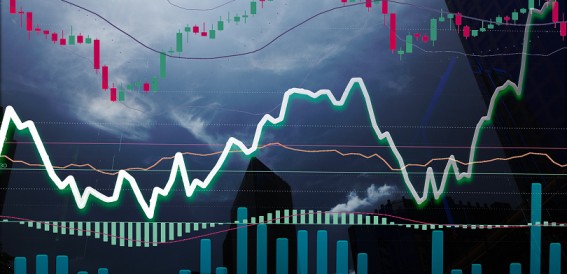In stock market trading, understanding the difference between order book and trade book is crucial for making informed investment decisions. These tools provide valuable insights into market activity, helping traders and investors navigate their strategies effectively.
- What are Order Books?
- What are Trade Books?
- Difference Between Order Book and Trade Book
- Practical Application in Online Share Trading
- Conclusion
Topics Covered :
What are Order Books?
An order book is a real-time list of buy and sell orders for a specific security or financial instrument. It is an essential component of a trading platform, reflecting the interest of market participants. The order book shows the number of shares or contracts available at various price levels, providing a snapshot of supply and demand.
The order book consists of two main parts:
1. Bid Side: This section displays the buy orders, with the highest bid price at the top. The bid price is the maximum price a buyer will pay for a security.
2. Ask Side: This section lists the sell orders, with the lowest ask price at the top. The ask price is the minimum price a seller is willing to accept for a security.
By examining the order book, traders can gauge market sentiment and identify potential trading opportunities. For instance, many buy orders at a specific price level might indicate strong support, while a significant volume of sell orders could suggest resistance.
What are Trade Books?
A trade book, on the other hand, is a record of all executed trades for a particular security. Unlike the order book, which shows pending orders, the trade book provides historical data on completed transactions. This includes details such as the trade price, volume, and execution time.
The trade book offers valuable insights into market activity, helping traders analyse price trends and trading volumes. By reviewing the trade book, traders can identify patterns, assess market liquidity, and evaluate the impact of large trades on price movements.
For example, if a stock experiences a sudden spike in trading volume, the trade book can help determine whether this was due to a few large transactions or numerous smaller trades. Understanding these dynamics is crucial for developing effective trading strategies.
Difference Between Order Book and Trade Book
While both the order book and trade book are essential tools in Online Share Trading, they serve different purposes and provide distinct types of information. Here’s a detailed look at the difference between order book and trade book:
Real-Time vs. Historical Data
● Order Book: Provides real-time data on pending buy and sell orders. It shows the current market depth and liquidity, helping traders make immediate decisions based on existing market conditions.
● Trade Book: Offers historical data on completed trades. It records past transactions, which traders use to analyse market trends and price movements over time.
Provided
● Order Book: Displays bid and ask prices and the corresponding volumes. This information helps traders understand a particular security’s supply and demand dynamics.
● Trade Book: Lists executed trade details, including the price, volume, and time of each transaction. This data is crucial for analysing trading patterns and market behaviour.
Purpose
● Order Book: Used primarily for making short-term trading decisions. Traders monitor the order book to identify entry and exit points, gauge market sentiment and anticipate price movements.
● Trade Book: Utilised for post-trade analysis and long-term strategy development. Investors and analysts review the trade book to assess the performance of their trades, understand market trends, and refine their trading strategies.
Market Depth
● Order Book: A snapshot of market depth shows the number of shares available at different price levels. This helps traders understand the potential price impact of large orders and assess market liquidity.
● Trade Book: Does not provide market-depth information. Instead, it focuses on recording the details of executed trades, offering insights into market activity and price trends.
Practical Application in Online Share Trading
For those using a Demat Account Online, both the order book and trade book are accessible through their trading platform. Here’s how they can be used effectively:
● Order Book Analysis: Traders can monitor the order book to spot significant buy or sell orders, identify support and resistance levels, and make informed decisions on entering or exiting trades. For example, a trader might notice a large buy order below the current market price, indicating strong support and a potential buying opportunity.
● Trade Book Analysis: Reviewing the trade book helps traders understand the market’s reaction to various events, such as earnings announcements or economic data releases. By analysing the volume and price patterns of past trades, traders can develop strategies to capitalise on similar situations in the future.
| Feature | Order Book | Trade Book |
| Data Type | Real-time | Historical |
| Information Provided | Bid and ask prices, corresponding volumes | Executed trade details (price, volume, time) |
| Purpose | Short-term trading decisions | Post-trade analysis, long-term strategy development |
| Market Depth | Shows number of shares available at different price levels | Does not provide market depth information |
| Usage | Identify entry/exit points, gauge market sentiment | Analyze trading patterns, assess market trends |
| Practical Example | Spot significant buy/sell orders, identify support/resistance levels | Review past trades to understand market reactions, develop future strategies |
Conclusion
Understanding the difference between order book and trade book is vital for successful trading in the stock market. While the order book provides real-time data on pending orders, the trade book offers historical records of executed trades.
Both tools are essential for developing effective trading strategies and making informed decisions. By leveraging the capabilities of an online demat account, traders can access and utilise these resources to optimise their trading performance and achieve their investment goals.













